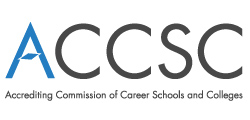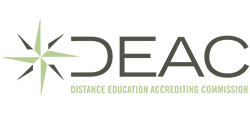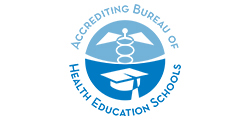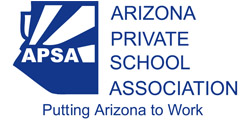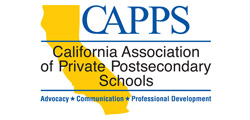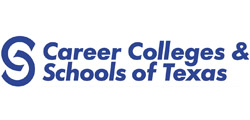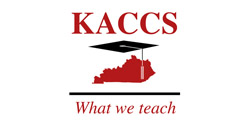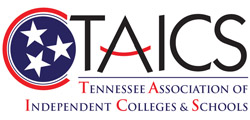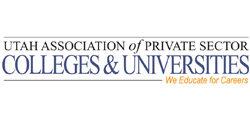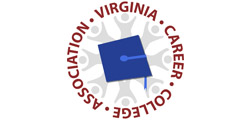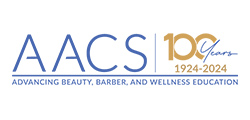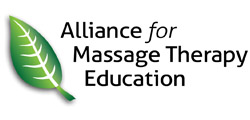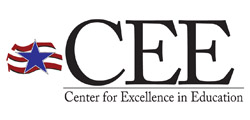Badge Evidence | Completed Courses (4 Hours Each)
CM141FERPA and Privacy: A Practical Approach
The Family Educational Rights and Privacy Act of 1974 (FERPA or the Buckley Amendment) is a federal law in the United States designed to provide students with access to, and the privacy of, their educational records. The law applies to students in higher education and educational institutions that receive funding under a program administered by the U.S. Department of Education. This course is designed to provide participants with a working knowledge of FERPA guidelines to ensure proper handling of educational records and other institutional requirements.
EC115Integrating Career Readiness Into Your Courses: Part I
This course will provide an overview of career readiness including information and activities that may be incorporated into your courses. This course, which forms Part I of a two-part series, provides details about four specific career readiness skills: critical thinking/problem solving, verbal/written communications, teamwork/collaboration, and information technology applications. Additional thoughts and resources will also be provided to allow you to consider multiple ways to assist students in developing these skills in your courses.
EC116Integrating Career Readiness Into Your Courses: Part II
This course will provide a brief review of career readiness and provide additional skills to incorporate into your courses. This course is Part II of a two (2) part series of courses. Therefore, this course will provide details about four (4) additional specific career readiness skills. These skills include leadership, professionalism/work ethic, career management, and global/multicultural fluency. Further thoughts and resources will also be provided to allow instructors to consider additional ways to incorporate these skills into their courses.
ED101Effective Teaching Strategies
This introductory course covers the essential roles of a teacher and the competencies required to be a successful instructor in an educational institution. Proven techniques and strategies for planning and preparation are presented and discussed. In addition, the course offers effective methods for conducting the first class meeting and delivering course content. This course provides a solid foundation for new instructors and serves as an excellent refresher for more experienced instructors.
ED102Student Retention Methods
The instructor is the real key to student retention at any educational institution. Instructors must keep focused on student motivation and retention each and every day of class. Developing strategies for retaining students throughout the entire training sequence is both complex and rewarding. All instructors should have the goal of seeing all of their students successfully complete their class. This course helps you reach that goal by helping you to understand your students and use proven motivation and retention techniques to keep them enrolled and engaged in the learning process.
ED104Class Management Strategies
This course provides methods and techniques for managing students and class activities. We start by reviewing the steps instructors need to follow as they introduce a class to new students. We then discuss strategies to effectively deal with unfocused and challenging students. The course ends by describing common mistakes made by instructors and ways to avoid them.
ED112Influencing Student Motivation
This course is intended to offer a practical explanation of how an instructor’s behaviors and choices can influence the motivation of students. It is not intended to be a theoretical or academic treatise about motivation. Module 1 offers useful tips that may help instructors to motivate students. Students’ security and autonomy are described as they influence motivation during instruction, questioning, activities, and evaluations. This is followed by a discussion of how motivation can be improved by enhancing students' sense of autonomy when making assignments, selecting instructional methods, implementing classroom procedures, and developing evaluations. In Module 2, intrinsic and extrinsic motivators are defined and compared. Finally, a variety of "miscellaneous motivators" are offered for instructors to consider.
ED113Managing the Adult Classroom
This course compares and contrasts four styles of classroom management. The course includes "virtual visits" to animated classrooms where participants observe four instructors who exhibit different management styles. The style that is preferred by most students is identified and described, and suggestions are offered on how instructors can modify their personal style to increase their effectiveness. A four-step model for developing successful classroom management strategies is presented and is followed by a discussion of a practical, behavioral approach to classroom management. Characteristics that foster good discipline in the educational institution and in the classroom are listed and explained, and tips are offered that can improve both institution-wide and classroom discipline. Finally, a number of scenarios involving common discipline problems are described.
ED116Critical Thinking Processes and Applications
The majority of careers require the ability to think critically and problem solve at one level or another. Employers seek individuals who can think independently, propose solutions, and solve problems. The content in this course provides the foundation for critical thinking and demonstrates how people with different interests, abilities, and aptitudes approach problem solving. The course covers the different kinds of intelligence and how they impact critical thinking, for a broader understanding of how people process solutions to problems. It concludes with step-by-step instructions for helping students develop and refine their own critical thinking skills.
ED144Student Empowerment for Learning Success
This course explores the different components of student empowerment and the value that it has in learning success. Student empowerment is a necessary component for students as they transition to and through postsecondary training. Content will be presented that will raise awareness of what student empowerment is and how it can enhance the learning process for students. Strategies are given for enhancing the development of student empowerment that can be implemented both online and onsite.
ED145Stress Reduction and Management for Educators
This course will provide an overview of a few stress reduction/management techniques for educators. Stress plays a significant role in educators' lives and careers; therefore, ideas for self-help are essential. Details will be provided about ways to reduce stress-related physical/mental issues, build emotional resilience, and practice mindfulness, along with other methods for stress reduction/management. The course provides not only information for educators, but activities for students that can be incorporated to help them reduce/manage their stress as well. With this information, educators may find more work-life balance, health benefits, and other opportunities for stress reduction and management. Application of these techniques can be helpful in enabling educators to better cope with the stress in their lives and careers.
ED400Coping with Stress and Burnout
Stress is something that is present throughout all workplaces in the world. It is often something that cannot be avoided, but instead, must be properly managed. Burnout on the other hand, is something that is less frequent, but far too prevalent. Burnout can cause even the best worker to slow down in productivity and quality (often dramatically). Throughout this course, we will discuss stress, burnout, and many of the causes that you may notice on even a daily basis. We will discuss how to appropriately handle and mitigate stressors, and how to lessen the risk of burnout occurring.
ED401Basics of Crisis Management
Crisis management begins with creating and implementing a plan of action that can be executed efficiently and quickly. As an educator, it will be important to recognize signs of crisis in yourself, fellow coworkers, and even students on campus. If you are an administrator, it not only takes a keen eye to recognize signs of crisis in yourself, but this also applies to recognizing crisis in others around you. In this course, you will explore the various aspects of a crisis, how to identify individuals in crisis, and how to appropriately respond to those individuals to improve the overall situation.
ED402Fostering Soft Skills in the Classroom I
This class will review communication, collaboration, and time management soft skills that can be instilled to help a student excel not only in the classroom, but also on the job. A variety of ideas and methods to implement the growth of those soft skills will also be shared in the course. Learning content is only part of the goal to empower students and graduates to be attractive to potential employers. The human side of the business world - the people - is what makes a company great, so it is imperative to foster the learning of both content and soft skills as students travel on their educational path to a job and career.
ED403Fostering Soft Skills in the Classroom II
This class will review adaptability, problem solving, conflict resolution, self-motivation, and feedback soft skills that can be instilled to help a student excel not only in the classroom, but also on the job. A variety of ideas and methods to implement the growth of those soft skills will also be shared in the course. Learning the content is only part of the goal to empower the students and graduates to be attractive to potential employers. The human side of the business world—the people—is what makes a company great, so it is imperative to foster the learning of both content and soft skills as students travel on their educational path to a job and career.
ML122Difficult Interactions
This course will show you how to discuss and resolve difficult interactions in the workplace - whether with employees, peers, bosses, or even suppliers and customers.




